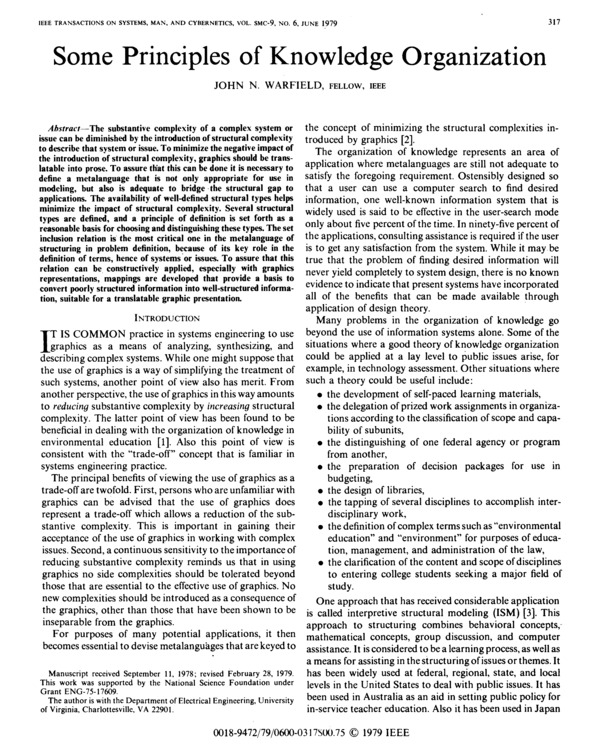Contains part of the theory needed for writing ISM software. The mathematical theory of how to eliminate overlap among concepts, using Translatable Graphics, Structural Types, Problem Definitions, Block Representation of Sets, and Mapping Theory, can be helpful in replacing a set of overlapping goals with a set of relatively independent goals when constructing a usable planning or policy decision. NOTE: LATER WHEN WARFIELD WROTE HIS LAST BOOK IN YEAR 2009, HE INCLUDED THIS PARAGRAPH REFERENCING THIS PAPER: "Counting and Dimensionality. Also, in working with complexity, it is helpful to resurrect some elementary formulas such as those for the number of combinations of N things taken k at a time and the number of permutations of N things taken k at a time. Often useful perspective on the magnitude of reasoning challenges can be obtained by simple calculations from these formulas. Iterative array mapping (IAM) is introduced from my 1979 paper, which furnished an algorithm for converting any collection of overlapping sets into a collection of non-overlapping sets (an array, Warfield, 1979). This idea is helpful later, when the notion of dimensionality of a situation is introduced as a key concept in solidifying a perspective on a meaning of “variety” in Ashby’s Law. By formalizing that idea, it is possible to prescribe a design algorithm for application in a group process aimed at resolving complexity" This paper is part of the GRAILS (Part 1 and Part 2) proposal, [as Appendix 3, pp 75-83] if I can't find decent copy elsewhere get it from there
[OK]


